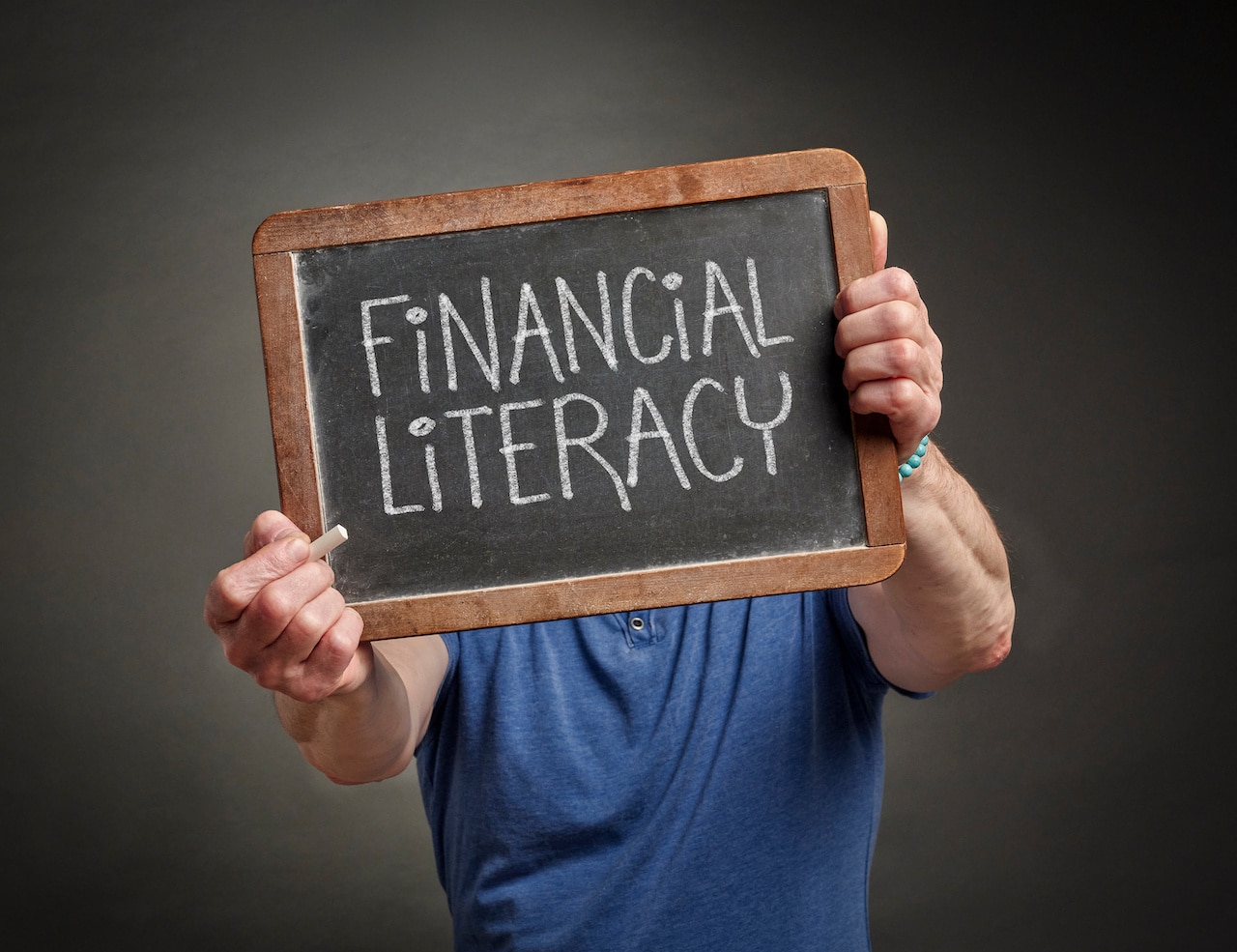Credit Sesame argues why financial literacy should be the fourth basic skill taught in schools.
The three Rs in education are Reading, wRiting and aRithmetic. Most people agree that those basic skills are necessary for life. What about money management? Knowing how to spend, borrow, save and invest wisely. It could be argued that financial knowledge is as important as the three Rs. Since April 2023 is Financial Literacy Month, it’s a good time to discuss why financial literacy should be taught in schools.
Why financial literacy as a 4th basic skill?
Why do we need to improve our financial literacy? Because in the US, financial ignorance is taking a terrible toll, and financial problems tend to spill into other parts of life. Researchers reported in the Journal of Marriage and Family that money stress often leads to health problems, emotional issues and poor marital relationships.
Poor credit ratings
Being uneducated about money is linked to lower credit scores, and failure to build credit can deny families home-buying opportunities. Harvard University’s Joint Center for Housing Studies claims that homeownership is the most reliable way to build wealth and that the average homeowner’s wealth is 40 times that of the average renter.
In addition, consumers without good credit pay much more for everything they finance, including autos, homes, credit card balances, and education. Credit card rates for people with excellent credit run about 10% lower than those with fair or poor credit (just under 19% vs nearly 29% as of March 2023). When families spend more on financing costs, less money is available for savings or other purchases.
Student loan balances
Researchers at Old Dominion University surveyed over 1,000 grads and most said they were unprepared for the impact of their loans and wished that they had received “more financial literacy” during the college decision process and at college orientations. “I had no idea what I was getting myself into at the age of 18 signing all those forms for financial aid,” one grad said ruefully.
Today, it takes students who finance college education an average of 21 years to repay their student loan balances. The difficulty in repaying their loans completely blindsides many grads because they don’t know how much the accruing interest will increase their balances. In addition, students often choose degrees without considering their earning potential or even if they can successfully complete the program. It is clear why financial literacy may be useful before enrolling at college and taking out a loan.
Financial insecurity
According to a recent LendingClub survey, two-thirds of Americans lived paycheck to paycheck in 2022. And nearly three-fourths of those consumers experienced difficulty just covering their bills. Living paycheck to paycheck means nothing is left over after paying your living expenses. In addition, half of Americans have under $500 in an emergency fund. This is far less than the three months of living expenses recommended by experts.
Spending without a budget or emergency savings leaves households vulnerable to unexpected costs or hiccups in their income. In the NPR article Paycheck-To-Paycheck Nation: Why Even Americans With Higher Income Struggle With Bills, exasperated consumer Rhonda Alvarez said, “I make decent money now, and I shouldn’t have to live paycheck to paycheck.” Rhonda also said that she wished schools would teach children money management. “It’s way more important sometimes than algebra or geometry.”
Excess debt
People without much financial knowledge are more likely to experience excessive debt loads, credit problems and bankruptcy. Getting a grasp as to why financial literacy is important may help to avoid these basic financial mistakes.
On the other hand, studies have shown that financially literate consumers are less likely to have credit card debt and more likely to pay off their balances each month. They also refinance their mortgages when it makes sense to do so to minimize interest expense. In addition, financially savvy adults avoid borrowing against their 401(k) plans and are less likely to resort to expensive loans from payday lenders, pawn shops and auto title lenders.
Unprepared for retirement
A recent McKinsey study found that 80% of Americans are financially unprepared for retirement. That’s a serious problem because those who fail to save for retirement may depend on Social Security payments to survive, and the average Social Security check in 2022 was $1,656.30.
Why would so many be setting themselves up for poverty once they stop working?
Theresa Ghilarducci, professor of economic policy analysis at The New School for Social Research in New York, claims few of us have the financial literacy needed to retire successfully under our current system. “The U.S. is the only industrial country that depends on untrained individuals supplementing their own basic Social Security and long-term savings with a system of voluntary contributions and retail investment products,: she said. “It’s like requiring everyone to do their own home electrical wiring and dental work.”
American retirement is unlikely to change in the near term, so future generations need a better understanding of how savings, investing, and compounding interest work. The sooner, the better, since the earlier you start, the easier it is to save enough for a secure retirement.
Understanding why financial literacy is important
Financial literacy means acquiring these important basic financial skills, which may be considered life skills.
- Establish a savings habit.
- Avoid unnecessary debt.
- Create and stick to a budget.
- Borrow wisely when necessary.
- Establish and protect a good credit rating.
- Plan for retirement.
- Invest correctly for different life stages.
- Insure against catastrophic losses.
Studies have shown that students with higher financial literacy are less likely to incur late fees, use payday loans or make only the minimum payments on their credit cards. And states that have deployed financial literacy programs are getting good results. For instance, within three years, Georgia, Idaho and Texas saw credit scores rise and delinquency rates fall. These are good reasons why financial literacy should be part of a high school, or even younger, curriculum.
Financial literacy coursework
What should be taught in a high school financial literacy class? The Federal Reserve Bank has developed this standard personal finance curriculum for older students. Our kids should know these things, and so should we.
Unit 1: Decision making
- Lesson 1.1: The Art of Decision making
- Lesson 1.2: Opportunity Cost
- Lesson 1.3: Making Choices and Identifying Costs
Unit 2: Earning Income
- Lesson 2.1: It’s Your Paycheck: Invest in Yourself
- Lesson 2.2: Investing in Yourself
- Lesson 2.3: Teaching Human Capital and the Importance of Postsecondary Education
- Lesson 2.4: What Are Taxes For?
- Lesson 2.5: Understanding Taxes
- Lesson 2.6: It’s Your Paycheck: “W” Is for Wages, W-4, and W-2
- Lesson 2.7: Individual Income Tax: The Basics and New Changes
Unit 3: Buying Goods and Services
- Lesson 3.1: Making a Budget—It’s All Spending
- Lesson 3.2: Budget Trade-Offs—A Penny Here and a Penny There
- Lesson 3.3: Big Spenders
- Lesson 3.4: Smart Phones and Budget Changes
- Lesson 3.5: Advertising: Dollars and Decisions
Unit 4: Saving
- Lesson 4.1: Time Preference—Why It Is Hard to Save
- Lesson 4.2: Simple and Compound Interest—Why It Is Great to Save
- Lesson 4.3: Time Value of Money
- Lesson 4.4: No-Frills Money Skills: Growing Money
Unit 5: Using Credit
- Lesson 5.1: The Three Cs of Credit
- Lesson 5.2: Evaluating the Benefits and Costs of Credit
- Lesson 5.3: Credit Bureaus: The Record Keepers
- Lesson 5.4: Cards, Cars, and Currency: The Car Deal Package
- Lesson 5.5: Bankruptcy: When All Else Fails
- Lesson 5.6: On the Move: Renting Basics
- Lesson 5.7: Fast Cash and Payday Loans
Unit 6: Financial Investing
- Lesson 6.1: Meeting Financial Goals—Rate of Return
- Lesson 6.2: Managing Risk—Time and Diversification
- Lesson 6.3: Evaluating Investment Options
- Lesson 6.4: No-Frills Money Skills: Get Into Stocks
- Lesson 6.5: Diversification and Risk
- Lesson 6.6: No-Frills Money Skills: Understanding Bonds
Unit 7: Protecting and Insuring
- Lesson 7.1: Insurance: Coverage and Cost Basics
- Lesson 7.2: Is Insurance Worth Buying?
- Lesson 7.3: The Three Ds of Identity Theft
Parents can take control now
While only about one-third of students have access to financial literacy content at school, parents don’t have to wait to help their kids. The FDIC has created financial literacy coursework that you can download for every grade from K through 12.
Here’s an example of a budgeting activity a parent can do with kids in the third through fifth grade:
“Ask your child to save your grocery store receipts for a week. At the end of the week, to help with the family budget, have your child add up how much money was spent on food.
Discuss ideas to save money on future food shopping trips to meet budget goals. You can also
invite your child to collect the receipts for a longer period of time (several weeks or months) to keep
track of progress toward goals. Check in regularly to discuss as a family.”
That exercise seems like it would be good for most adults as well.
The good news is that with the right personal finance skills, most people can build a decent credit score, learn to budget, avoid excess debt and save for retirement. With the right tools, you can live better today and enjoy more security tomorrow.
If you enjoyed Beyond the 3 Rs: Why financial literacy should be a 4th basic skill you may like,
- How to Develop Good Financial Habits for Stress-Free Living
- How Financial Literacy Month Motivates Financial Wellness
Disclaimer: The article and information provided here is for informational purposes only and is not intended as a substitute for professional advice.




















